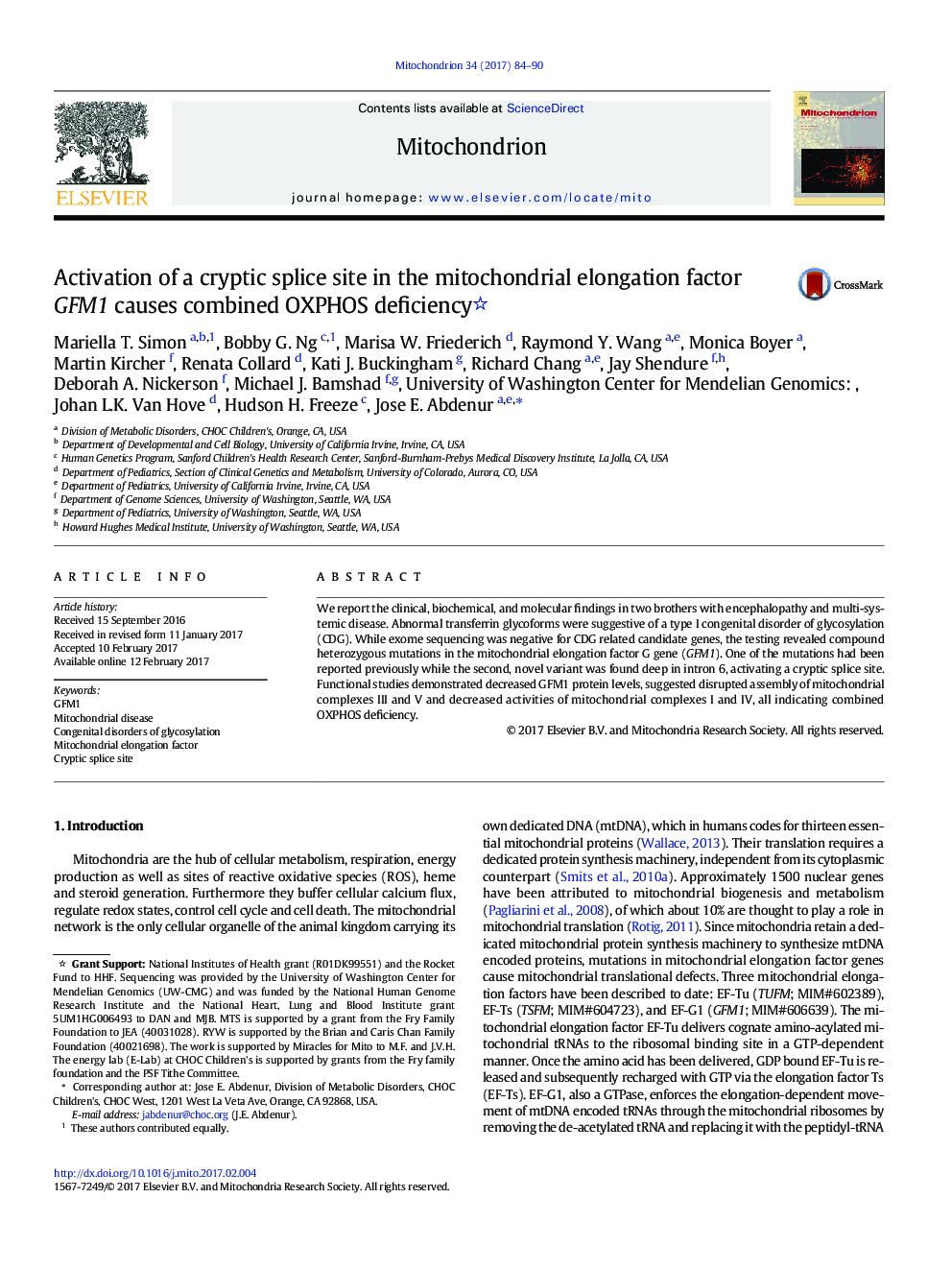| Article ID | Journal | Published Year | Pages | File Type |
|---|---|---|---|---|
| 5519695 | Mitochondrion | 2017 | 7 Pages |
â¢Exome sequencing for two siblings with suspected congenital disorder of glycosylation reveals mutations in GFM1.â¢A novel GFM1 variant deep in intron 6 activates a cryptic splice site.â¢Mutations lead to decreased GFM1 protein levels and disrupted assembly of OXPHOS complexes in fibroblasts.â¢Clinical course improved at 7 years of age in one of the siblings.
We report the clinical, biochemical, and molecular findings in two brothers with encephalopathy and multi-systemic disease. Abnormal transferrin glycoforms were suggestive of a type I congenital disorder of glycosylation (CDG). While exome sequencing was negative for CDG related candidate genes, the testing revealed compound heterozygous mutations in the mitochondrial elongation factor G gene (GFM1). One of the mutations had been reported previously while the second, novel variant was found deep in intron 6, activating a cryptic splice site. Functional studies demonstrated decreased GFM1 protein levels, suggested disrupted assembly of mitochondrial complexes III and V and decreased activities of mitochondrial complexes I and IV, all indicating combined OXPHOS deficiency.
